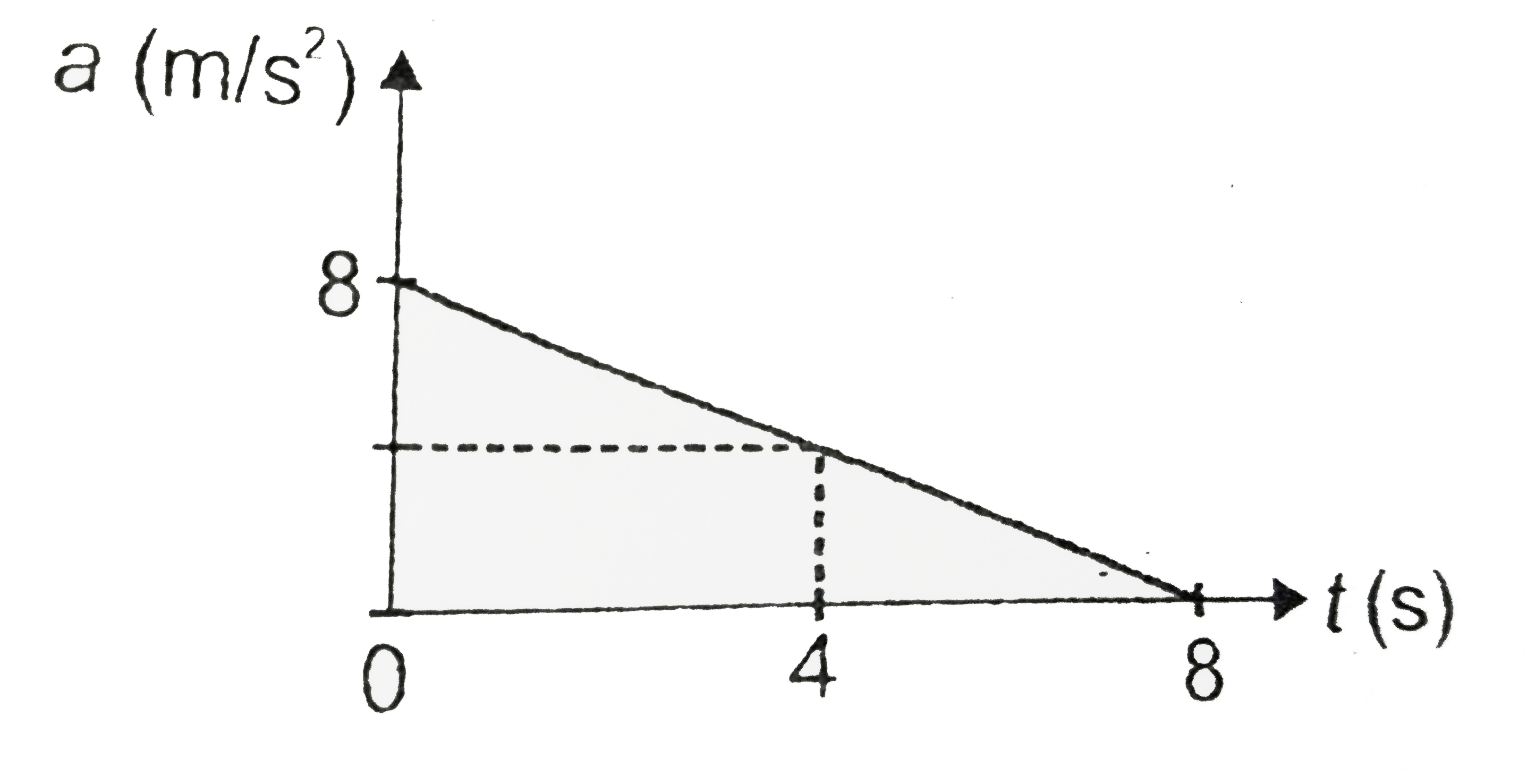Acceleration of particle moving along the x-axis varies according to the law a=−2v, where a is in m/s2 and v is in m/s. At the instant t=0, the particle passes the origin with a velocity of 2m/s moving in the positive x-direction.
(a) Find its velocity v as function of time t.
(b) Find its position x as function of time t.
(c) Find its velocity v as function of its position coordinates.
(d) find the maximum distance it can go away from the origin.
(e) Will it reach the above-mentioned maximum distance?
(a) By substituting the given relation a=dv/dt, we have
dvv=−2dt⇒v∫2dvv=−2t∫0dt→v=2e−2t…(i)
(b) By substituting the above equation in v=dx/dt, we have
dx=2e−2tdt⇒x∫0dx=2t∫0e−2tdt→x=1−e−2t...(ii)
(c) Substituting given expression a in the equation a=vdv/dx and rearranging, we have
dv=−2dx⇒v∫2dv=−2x∫0dx→v=2(1−x) ...(iii)
(d) Eq. (iii) suggest that to cover 1m it will take whose value tends to infinity. Therefore, it can never cover this distance.
Topper's Solved these Questions
- BOOK - ALLENCHAPTER - KINEMATICSEXERCISE - EXERCISE-0155videos
KINEMATICS
- BOOK - ALLENCHAPTER - KINEMATICSEXERCISE - EXERCISE-0257videos
KINEMATICS
- BOOK - ALLENCHAPTER - ERROR AND MEASUREMENTEXERCISE - Part-2(Exercise-2)(B)22videos
ERROR AND MEASUREMENT
- BOOK - ALLENCHAPTER - KINEMATICS (MOTION ALONG A STRAIGHT LINE AND MOTION IN A PLANE)EXERCISE - BEGINNER S BOX-78videos
KINEMATICS (MOTION ALONG A STRAIGHT LINE AND MOTION IN A PLANE)
Similar Questions
A particle in moving in a straight line such that its velocity is given by v=12t−3t2, where v is in m//s and t is in seconds. If at =0, the particle is at the origin, find the velocity at t=3s.
View SolutionThe velocity of a particle moving on the x-axis is given by v=x2+x, where x is in m and v in m/s. What is its position (in m) when its acceleration is 30m/s2.
View Solution
Knowledge Check
- Question 1 - Select One
Acceleration of a particle moving along the x-axis is defined by the law a=−4x, where a is in m/s2 and x is in meters. At the instant t=0, the particle passes the origin with a velocity of 2m/s moving in the positive x-direction.
(a) Find its velocity v as function of its position coordinates.
(b) find its position x as function of time t.
(c) Find the maximum distance it can go away from the origin.Av=2√2−x2Bv=3√1−x2Cv=2√1−x3Dv=2√1−x2 - Question 2 - Select One
The acceleration of a particle moving along x-direction is given by equation a=(3−2t)m/s2. At the instant t=0 and t=6s, it occupies the same position.
(a) Find the initial velocity vo
(b) What will be the velocity at t=2s?A2m/sB15m/sC25m/sD5m/s - Question 3 - Select One
The velocity of a particle moving on the x− axis is gienv by v=x2+x( for x>0) where v is in m/s and x is in m. Find its acceleration in m/s2 when passing through the point x=2m
A0B5C11D30
(a) At the moment t=0, a particle leaves the origin and moves in the positive direction of the x-axis. Its velocity is given by v=10−2t. Find the displacement and distance in the first 8s.
(b) If v=t−t2, find the displacement and distamce in first 2s.View SolutionConsider the v-t diagram of a particle moving along x axis as shown below.Velocity is in m/s and time is in seconds
View SolutionThe acceleration-time graph of a particle moving along x-axis is shown in the figure. If the particle starts with velocity 3 m/s at t = 0, find the velocity of particle at t = 4 s.
 View Solution
View SolutionThe velocity of a particle moving in the positive direction of the X-axis varies as V=K√S where K is a positive constant. Draw V−t graph.
View SolutionA particle is moving along x-axis. At time t=0, Its x-coordinate is x=−4m. Its velocity-time equation is v=8−2t where, v is in m//s and t in seconds.
(a) At how many times, particle is at a distance of 8m from the origin?
(b) Find those times.View Solution

